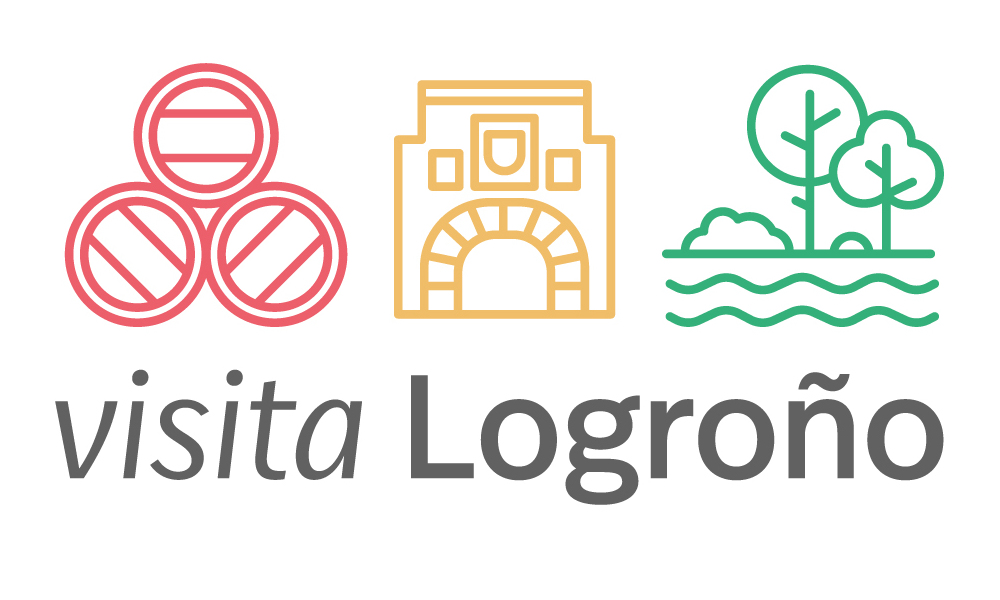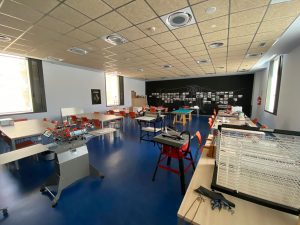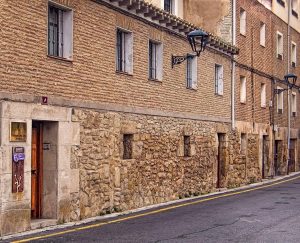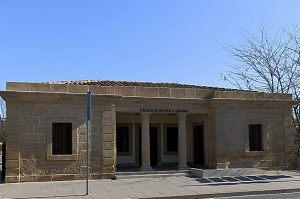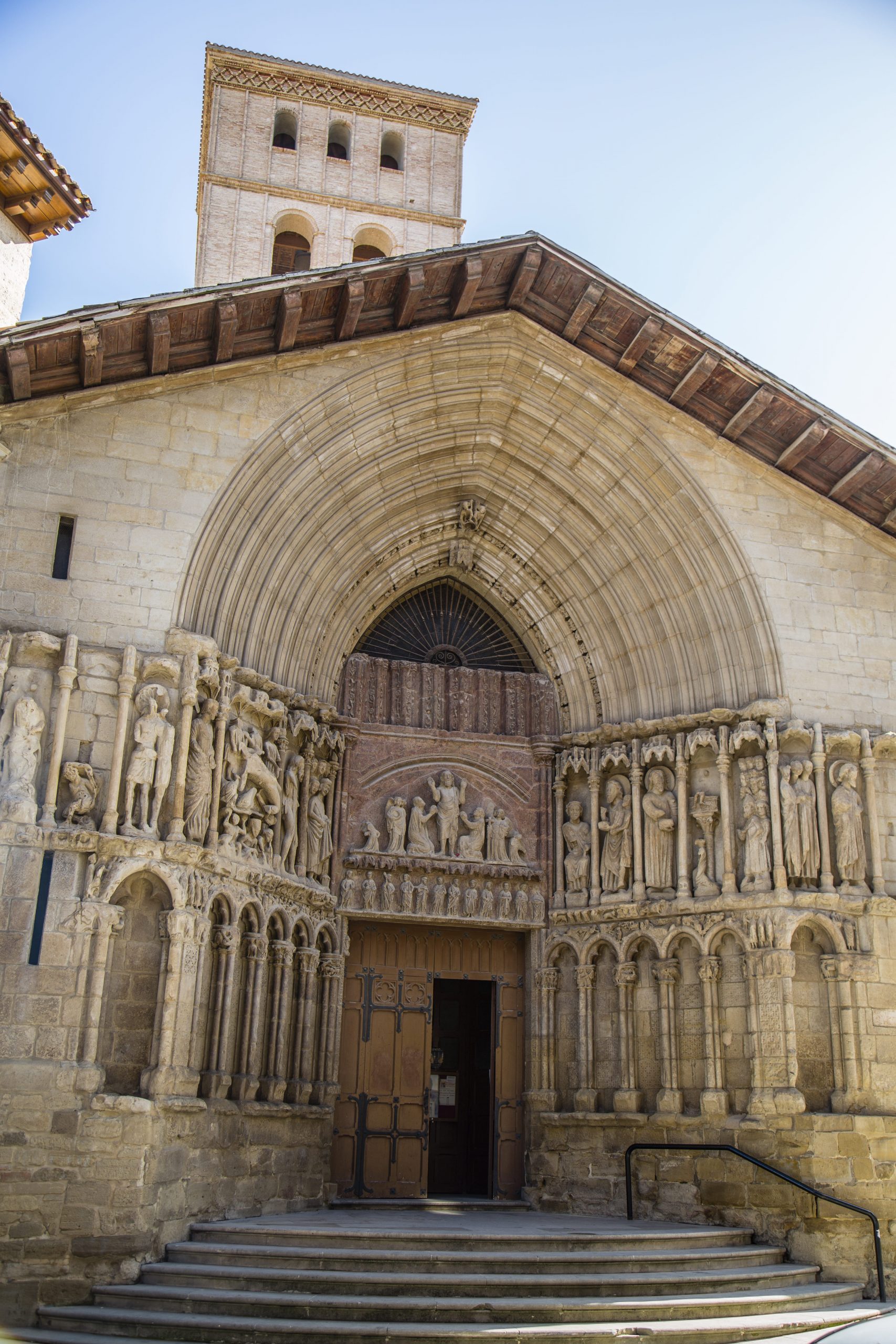
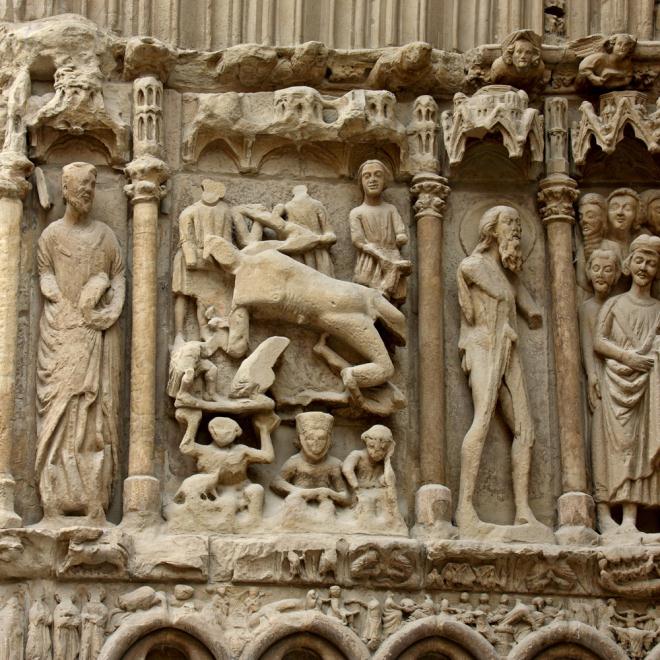
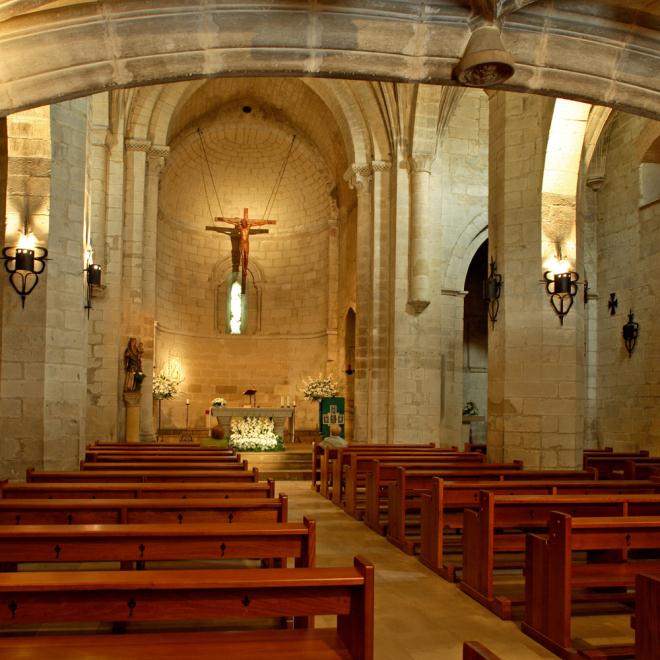
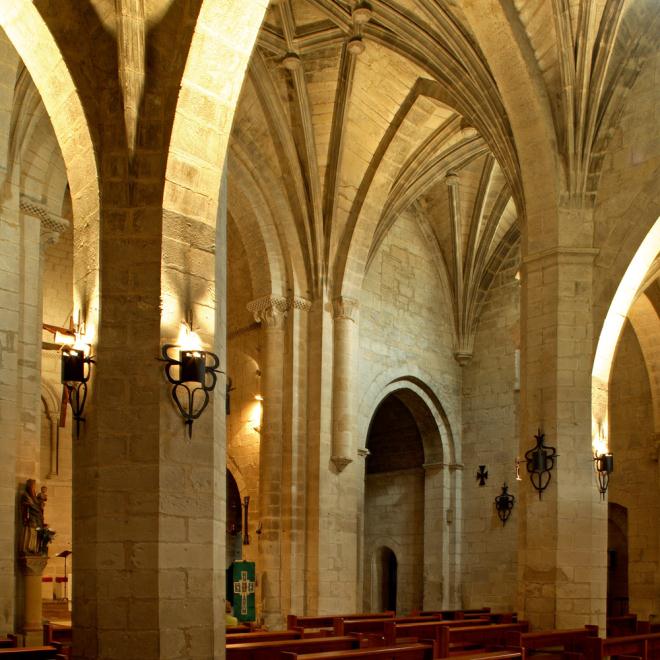
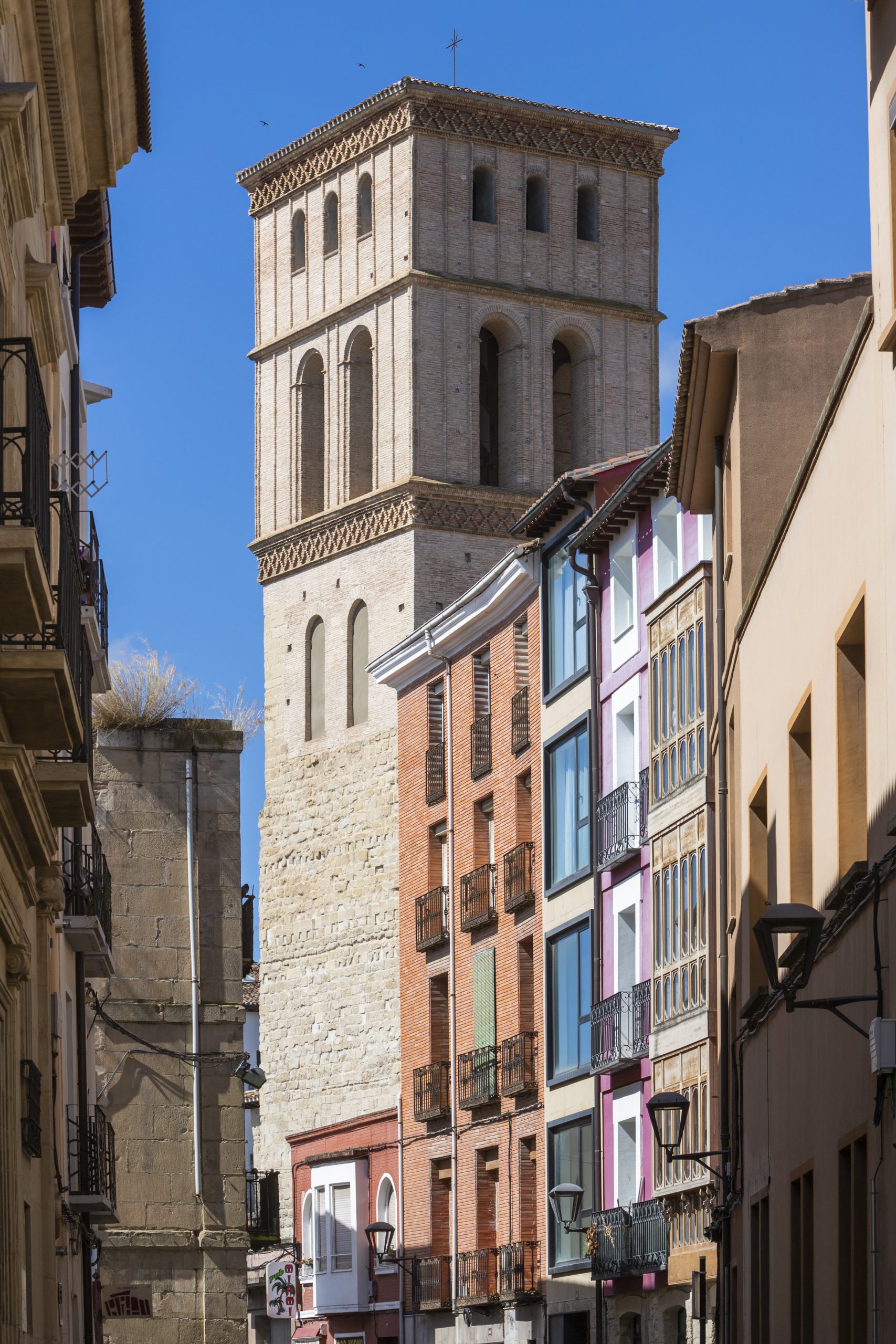
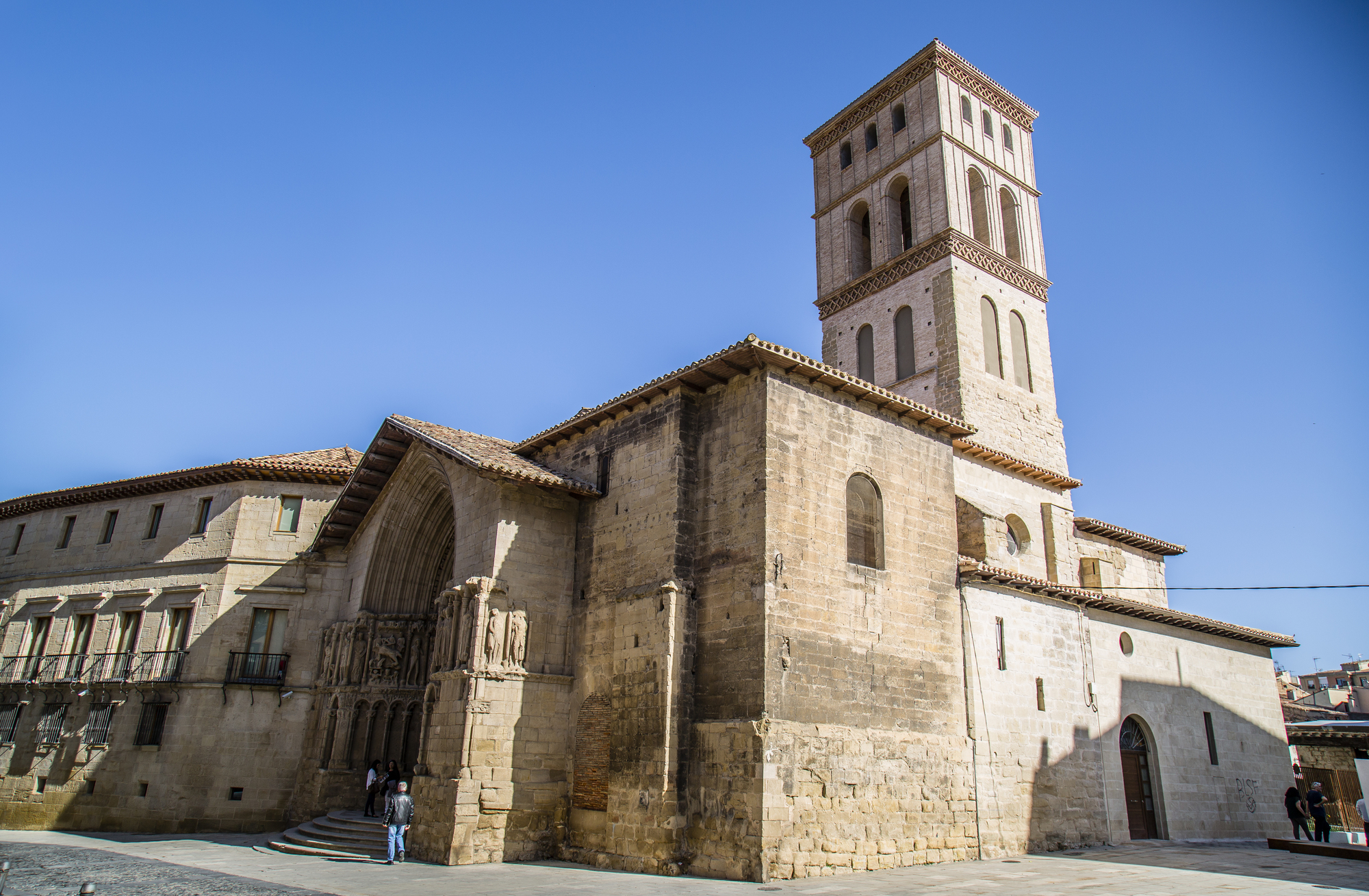
The Church of San Bartolomé San Bartolomé is one of the four churches of the Casco Antiguo (old town) and the oldest in the city. It is located in the square of the same name, between the streets Rodríguez Paterna, La Cadena, Herrerías and San Bartolomé, to which the same church gives its name. It is believed that its tower was part of the city’s defense line, and dedicated to protecting one of the doors of Logroño in the ancient times.
Architectural structure
The building has three naves separated by octagonal pillars; tripartite chevet, the central apse being semicircular and the sides having a straight head; high choir at the foot and an open chapel in the last section of the Epistle side.
Its construction probably begun in the second half of the 12th century, corresponding to that time the plan, which follows a typically Romanesque typology, the three apses and part of the tower.
The elevation of the walls, together with the pillars attached to them, and the simple crosses are already works from the 13th century. The building underwent a major remodeling in the 16th century and its naves were covered with starry vaults and terceletes, new pillars were added and a high choir was also built at the feet of the church.
The various remodeling plans and vicissitudes that the temple went through the centuries led to the disappearance of the main altarpiece and other objects of worship. In the vault of the central apse there are remains of Romanesque painting.
In the Márquez family chapel, located in the last section of the Epistle nave (right), there are two recumbent statues and tombs from the 14th century. Both sarcophagi are similar, they are supported by lion sculptures and the lid depicts recumbent statues of knights, dressed in period clothing and a hat with a quartered eagle shield and handcuffs. There is no unanimity regarding their origin and who these characters could be. At the beginning of the 20th century they were known as The Almendrones.
Sculptural cover
At the foot of the church there is a great facade with pointed archivolts, a Gothic work from the last third of the 13th century or the beginning of the 14th century, although with evident Romanesque reminiscences.
On the jambs, between columns and under canopies, they are represented episodes from the life of San Bartolomé (preaching in Armenia, healing of a demoniac, martyrdom ). The tympanum was moved in the 16th century to give light to the choir. It shows la Parusía or second coming of Christ on the day of the Last Judgment. He is represented standing, showing the wounds on his hands, next to the Virgin and Saint John the Evangelist, accompanied by angels who carry the instruments of the passion. It is an iconographic novelty that does not occur anywhere else, since Christ-Judge does not appear seated as usual. Under this scene, the twelve apostles appear with their corresponding attributes grouped two by two on the lintel.
The Tower of San Bartolomé
The bell tower was part of the ancient city wall. It sits on the central apse and consists of four sections: the first and second of ashlar masonry combined with brick, of medieval origin, and the last two of brick decorated with bands of rhombuses, a work of the 16th century in the Mudejar style.
The church had a cloister to the south that also served as a burial place, of which there are no vestiges and it is unknown what its appearance could have been.
In 1823, during the Liberal Triennium, the cult was suppressed and the temple was plunged into neglect.
It was destined for various uses: temporary hospital, cabinetmaker’s workshop, telegraph shop, coal warehouse … There was speculation that it would be converted into a Museum of Christian Antiquities and it was even proposed to demolish it and use its stone for the construction of a theater.
In 1899 theJesuits began to take care of him, being saved from ruin. In more recent times the annexed buildings to the east, which masked the apse, were demolished.
It is a national monument since 1866 and one of the most appreciated by the locals.
Plaza de San Bartolomé, 2. 26001 Logroño.
Free entrance.
It opens daily 10:00am-12:00pm
